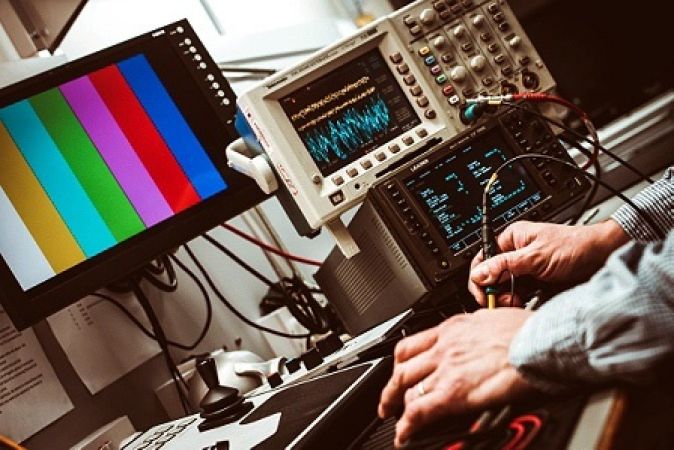Harmonics: Basic concepts you need to know

The phenomenon of harmonics began to make its presence felt for several decades. It is a phenomenon that is becoming more and more intense with the widespread use of electronic power in industrial installations and in Power Systems.
Nevertheless, many industries or owners of electrical installations lack sufficient knowledge of the phenomenon. Thus, either they encounter significant problems with the operation of their equipment, or are exposed – often unknowingly – to various dangers caused by the presence of harmonics in their equipment.
What are harmonics
AC voltage power systems systems operate at 50 Hz (US 60 Hz). This frequency is called basic or fundamental.
During the operation of these systems several voltages and currents of different (higher) frequencies are generated, e.g. 100 Hz, 150 Hz, 250 Hz etc. These frequencies, which are integral multiples of the fundamental, are called harmonics.
Thus, for example, the frequency of 150 Hz is called 3rd harmonic, frequency 250 Hz 5th harmonic etc. By extension, the voltage or current components of these higher frequencies are called harmonic voltages or harmonic currents respectively.
Causes and applications of harmonics
The most common reason to create harmonics in the electrical networks is the existence of non-linear loads and the semiconductor elements.
Non-linear loads and semiconductor elements are mainly present in industry, buildings (buildings, hotels, hospitals, airports etc.), shipping, power generation (RES, etc.) and oil extraction platforms.
As a general rule, harmonics are created where there are a large number of electronic power devices (rectifiers, inverters, inverters, etc.).
Especially in the industry sector, important harmonic sources are electric arc devices, welding devices, CNC machine tools, electric ovens and so on.
In large building complexes such as office buildings, shopping centers, hotels etc, there is a frequent occurrence of harmonics due to the extensive use of electronic devices, computers, UPS, air conditioners, etc.
Harmonics are created in Hospitals, due to usage of special medical equipment, such as axial and magnetic tomographs, ultrasound devices, radiation,
The magnitude of the harmonics depends mainly on the impedance of the network and how it interacts with the individual elements connected to it. High impedance networks are less prone to harmonic appearance.
Problems created by harmonics
The appearance of harmonics – in other words, the occurrence of higher frequencies in integral multiples of the fundamental – creates several problems.
The most serious and common problems created by the harmonics are – epigraphically – the following:
- Aging and equipment damage
- Increased energy or fuel consumption
- Increased losses (mainly thermal) due to high currents
- Unexpected downtime on production lines
- Destruction of electronic equipment, control systems etc
- Electric arcs, scintillators, fires etc
- Flickering (harmonic setting at lower frequencies), light destruction and blackouts
- Decrease of cosφ power factor
- Voltage distortion (sags, surges, etc.)
- Disturbances in generator and motor operation (braking currents, noise, etc.)
- Hypertension due to resonance
Harmonic measurements
The presence of harmonics can be ascertained only by making specific measurements.
Prerequisites for reliable measurements are the use of highly accurate measuring instruments and the performance of measurement work by qualified and experienced technical staff.
Measuring instruments must be calibrated and fully meet the requirements of international standard EN 50160, which specifies the requirements of all power quality issues.
At the same time, the technical staff should have the appropriate specialization, technical training and experience in order to make the necessary connections correctly, taking all the necessary security measures, and to properly record and evaluate the results in order to follow the processing in the design stage (if necessary).
For the above evaluation of the measurements, the total harmonic distortion (THD) indicators, for voltages THDv and currents (THDi) are used according to the following formulas

These indicators show how large (%) the effect of harmonic components is in comparison to the fundamental voltage or current component of 50 Hz. Large width harmonics mean an increase in THD.
According to most international standards (IEEE, IEC, EN), the THDv value should be below 5% for most applications, while in special requirements such as hospitals and airports this indicator should not exceed 3%.
Conclusion
Harmonics are a phenomenon that can cause different problems in industrial, buildings and shipping applications and therefore should not be ignored or underestimated.
A basic prerequisite for managing the hazards of harmonics is the execution of the relevant measurements of the installation so that the size of the harmonics can be calculated and the appropriate measures taken.
If the THDv is below 5% (or 3% in special requirements), the operation of the plant may be considered safe.
Otherwise, a technical study based on the results of the measurements must be carried out in order to formulate the appropriate technical proposal for the overall.

